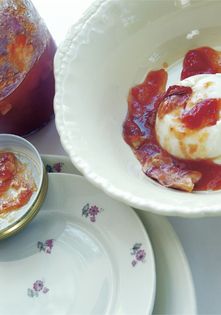Advertisement

Preparation info
- Makes 625 ml 2½ cups Jam and
4
Puddings - Difficulty
Easy
Appears in
By Tessa Kiros
Published 2004
As far as I am concerned, roses in food are the epitome of gorgeous. If you want to make this jam more rosy, add a few drops of rose water, and if you have any petals left over you can always scatter them in your bath. This jam is quite runny and has a beautiful colour — it would be wonderful dribbled over a not-too-sweet ice cream or served with a blob of crème fraiche. If you can manage it, make the jam with the first of the watermelons and the last of the roses. If you prefer your jam th


